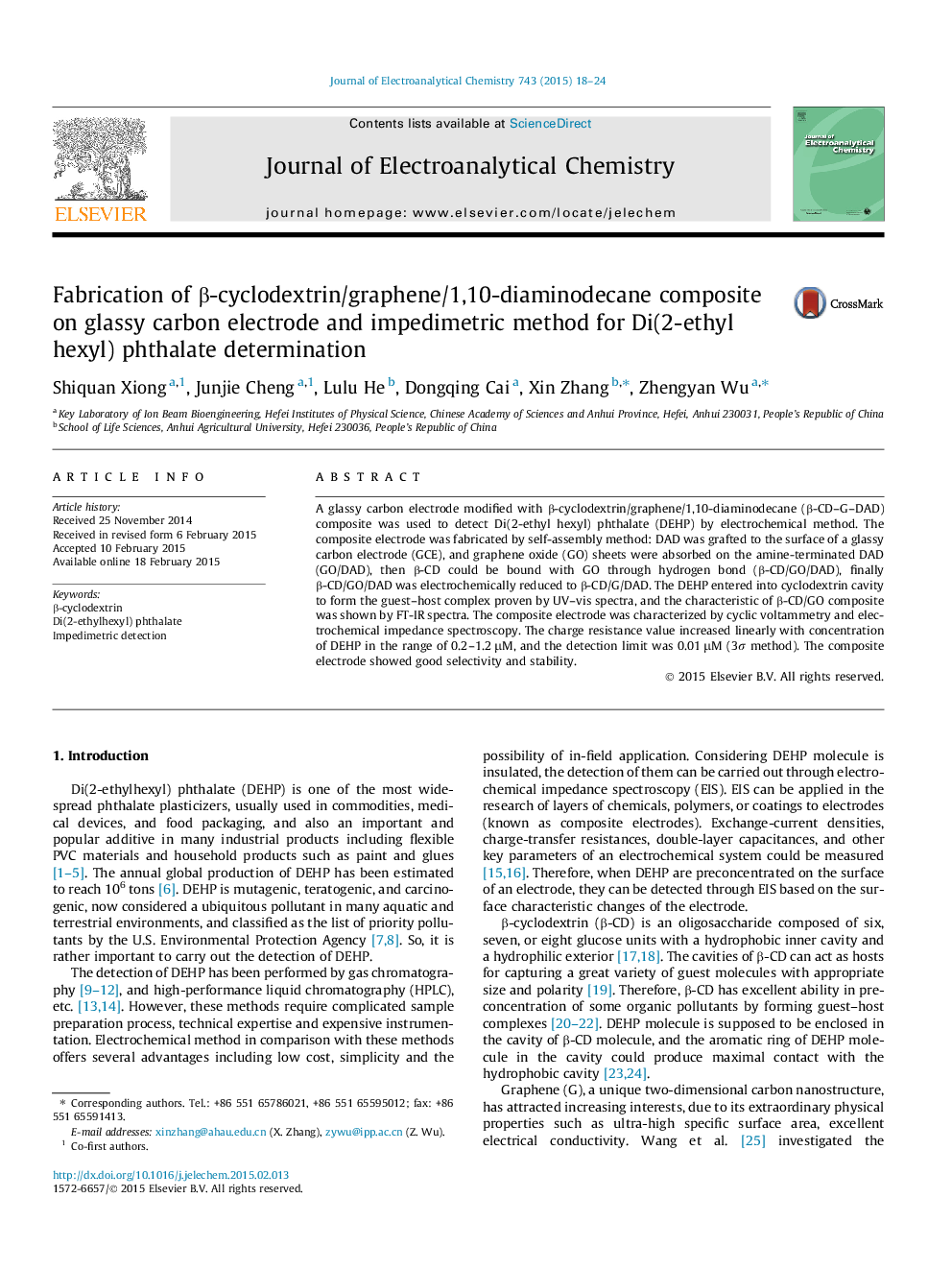| Article ID | Journal | Published Year | Pages | File Type |
|---|---|---|---|---|
| 218405 | Journal of Electroanalytical Chemistry | 2015 | 7 Pages |
•1,10-Diaminodecane, graphene and β-CD were self-assembled on the surface of a glassy carbon electrode.•Detection of DEHP was performed by electrochemical impedance spectroscopy.•The sensor was highly sensitive and selective to DEHP molecules and showed fine stability.
A glassy carbon electrode modified with β-cyclodextrin/graphene/1,10-diaminodecane (β-CD–G–DAD) composite was used to detect Di(2-ethyl hexyl) phthalate (DEHP) by electrochemical method. The composite electrode was fabricated by self-assembly method: DAD was grafted to the surface of a glassy carbon electrode (GCE), and graphene oxide (GO) sheets were absorbed on the amine-terminated DAD (GO/DAD), then β-CD could be bound with GO through hydrogen bond (β-CD/GO/DAD), finally β-CD/GO/DAD was electrochemically reduced to β-CD/G/DAD. The DEHP entered into cyclodextrin cavity to form the guest–host complex proven by UV–vis spectra, and the characteristic of β-CD/GO composite was shown by FT-IR spectra. The composite electrode was characterized by cyclic voltammetry and electrochemical impedance spectroscopy. The charge resistance value increased linearly with concentration of DEHP in the range of 0.2–1.2 μM, and the detection limit was 0.01 μM (3σ method). The composite electrode showed good selectivity and stability.
Graphical abstractA β-cyclodextrin-graphene-1,10-diaminodecane composites self-assembled on glassy carbon electrode by interaction was used to collect Di(2-ethyl hexyl) phthalate (DEHP), and detect DEHP by electrochemical method.Figure optionsDownload full-size imageDownload as PowerPoint slide
